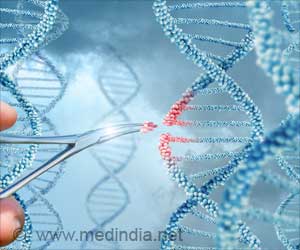Researchers announced the results of work on genome transplantation methods allowing them to transform one type of bacteria into another type.
Researchers at the J. Craig Venter Institute (JCVI) today announced the results of work on genome transplantation methods allowing them to transform one type of bacteria into another type dictated by the transplanted chromosome.
The work, published online in the journal Science, by JCVI's Carole Lartigue, Ph.D. and colleagues, outlines the methods and techniques used to change one bacterial species, Mycoplasma capricolum into another, Mycoplasma mycoides Large Colony (LC), by replacing one organism's genome with the other one's genome."The successful completion of this research is important because it is one of the key proof of principles in synthetic genomics that will allow us to realize the ultimate goal of creating a synthetic organism," said J. Craig Venter, Ph.D., president and chairman, JCVI.
"We are committed to this research as we believe that synthetic genomics holds great promise in helping to solve issues like climate change and in developing new sources of energy."
Methods and techniques>
The JCVI team devised several key steps to enable the genome transplantation. First, an antibiotic selectable marker gene was added to the M. mycoides LC chromosome to allow for selection of living cells containing the transplanted chromosome.
Then the team purified the DNA or chromosome from M. mycoides LC so that it was free from proteins (called naked DNA). This M. mycoides LC chromosome was then transplanted into the M. capricolum cells.
After several rounds of cell division, the recipient M. capricolum chromosome disappeared having been replaced by the donor M. mycoides LC chromosome, and the M. capricolum cells took on all the phenotypic characteristics of M. mycoides LC cells.
Advertisement
Two sets of antibodies that bound specifically to cell surface proteins from each cell were reacted with transplant cells, to demonstrate that the membrane proteins switch to those dictated by the transplanted chromosome not the recipient cell chromosome. The new, transformed organisms show up as bright blue colonies in images of blots probed with M. mycoides LC specific antibody.
Advertisement
The mycoplasmas used in the transplantation experiment are also relatively fast growing, allowing the team to ascertain success of the transplantation sooner than with other species of mycoplasmas.
According to Dr. Lartigue, "While we are excited by the results of our research, we are continuing to perfect and refine our techniques and methods as we move to the next phases and prepare to develop a fully synthetic chromosome."
Genome transplantation is an essential enabling step in the field of synthetic genomics as it is a key mechanism by which chemically synthesized chromosomes can be activated into viable living cells.
The ability to transfer the naked DNA isolated from one species into a second microbial species paves the way for next experiments to transplant a fully synthetic bacterial chromosome into a living organism and if successful, "boot up" the new entity.
There are many important applications of synthetic genomics research including development of new energy sources and as means to produce pharmaceuticals, chemicals or textiles.
Source-PRnewsWire
MED






